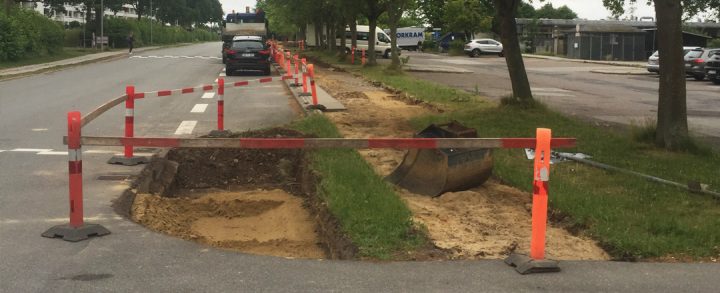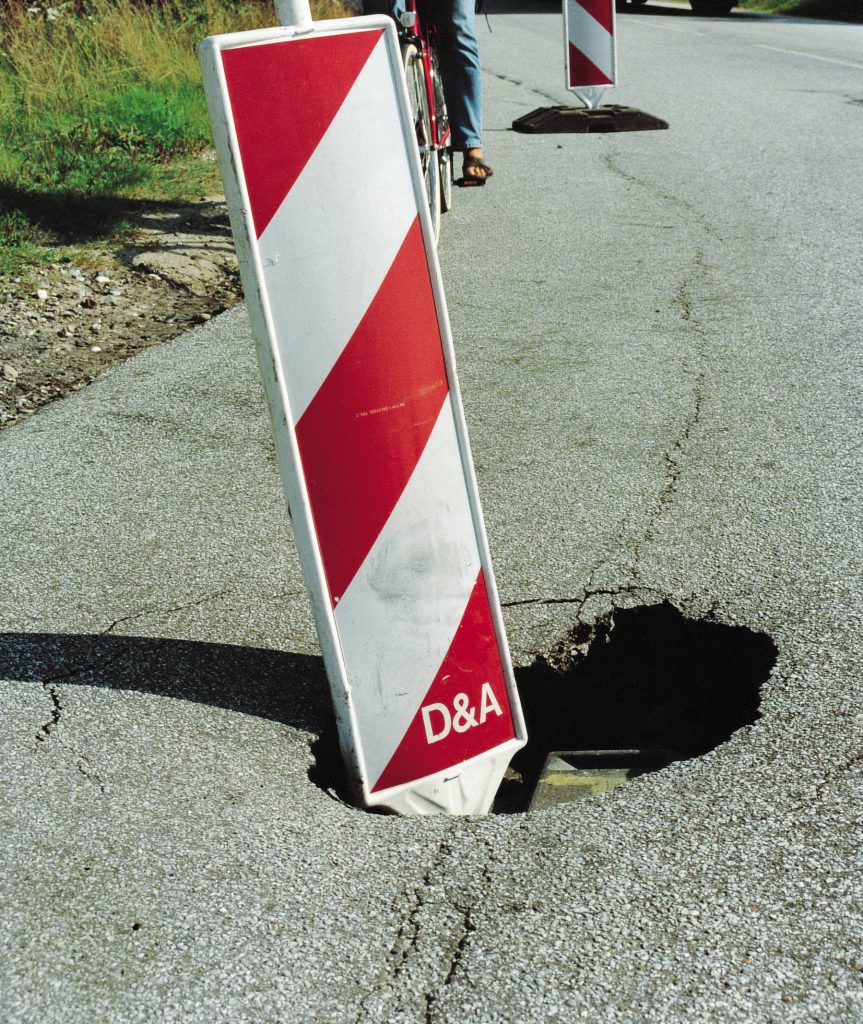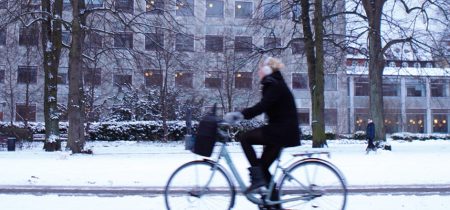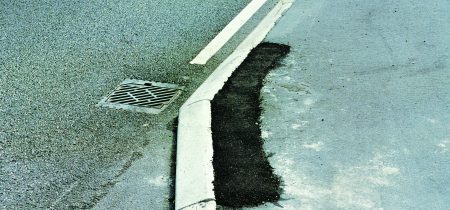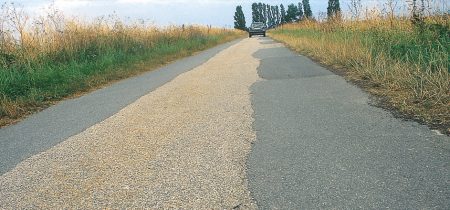Roadworks
Roadworks are a source of inconvenience and danger for all road users. However, cyclists are particularly at risk when the road surface is uneven and there are often cyclist road safety issues during roadworks. Regardless of whether the roadworks are initiated by the local authority, a cable company, or any other player, or whether they are carried out by the organization itself or by an independent contractor, it is crucial to address cyclist safety, passability, and comfort.
By Aros Kommunikation
Many roadworks are short-term, and will not affect the cycling experience. Nevertheless, there are a number of cyclist needs that must be addressed. Cyclists should not have to struggle over high kerbs or dismount at roadworks. High kerbs and dismounting and wheeling the bicycle should be the exception, and acceptable only at roadworks of less than a day’s duration and outside peak hours.
It’s a good idea at roadworks to give special consideration to cyclists since they are more at risk when it comes to road surface unevenness and detours than drivers:
- Clear markings and barriers can prevent cycling accidents.
- Priority to cyclist safety, comfort and passability can occasionally be used as a parameter for regulating motor traffic.
- The road authority can place stiffer demands on operators during cable and asphalt works in high-cyclist traffic areas, and notably improve supervision and control. It is in the road administration’s interests that the state of the traffic area when re-established is at least as good as it was before the excavation.
- In certain cases it is necessary to block off the work area completely. In such cases the optimal alternative route must be clearly indicated.
- If cyclists are directed onto the roadway, this must be indicated with the sign “Cyclists on the roadway”. However, at many excavations it is possible to allow cyclists to share space with pedestrians rather than motor vehicles; placing cyclists and pedestrians together may be the safest solution, depending on the amount of space available and the number of pedestrians. If the space is narrow and there are many cyclists and pedestrians, it’s worth considering temporary cyclist speed bumps.
Signage and markings during roadworks
Signage and road marking of a road construction site should be clear and easily understandable. At roadworks covering the entire width of the road it may be necessary to divert cyclists. It is important that cyclists should be informed of the diversion in advance so they can heighten their vigilance in time to choose another route.
Incorrect or unnecessarily restrictive signage may occur when excavation takes place at short notice. A typical example is a “No entry” sign when a “No motor vehicles” sign would do. Cycling prohibitions should be avoided whenever this is technically possible without jeopardizing safety.
There are examples of incorrect placement of temporary signs. Traffic signs are typically mounted on a low post on a rubber base, and typically placed on the edge of the road or on the cycle track. The cyclist can’t pass underneath the low height of the post, and the sign including the safety margin takes up 1 meter of the cycling area. This is especially problematic in bad weather when the cyclist is typically looking downwards.
Barrier matériel
Excavations should be provided with correct barriers, especially deeper excavations which can pose a great safety risk to cyclists.
- The operator must ensure that the cyclist cannot fall over or under the barrier.
- In addition, the operator must take steps to ensure that cyclists are not squeezed against the barrier by other traffic.
- A barrier across the cycle track should be established by traffic cones, bars, a wire fence, etc. and should be marked with at least two marker lights unless the barrier is sufficiently illuminated, which is rarely the case.
- A full height wire fence instead of a bar barrier or a traffic cone can safeguard the cyclist from falling into an excavation.
Regardless of the type of barrier it must be continually inspected since at worst a defect can have fatal consequences for the cyclist.
Traffic light marking
Normally, marking with traffic lights is only required when containers etc. are placed on the roadway. Bicycle lights are almost never powerful enough to light up the roads and paths safely, and it’s worthwhile considering installing marking lights for cyclists in dark areas and at dangerous excavations. When installing barriers across the cycle track there must be maximum 2 meters between each light and for barriers along the cycle track, maximum 10 meters.
Road plates
Excavations are often covered with road plates and the like in order to optimize traffic flow. Typically, thick iron plates with a high vertical edge are laid down. In order to protect cyclists’ tires and rims, plates with rounded edges can be used instead. It can be difficult for the cyclist to see whether the edge is uncomfortable and how it should be tackled, for example by reducing speed. During long term excavations it makes sense to install asphalt ramps on all high edge plates as well as use plates that are skid-free.
Traffic calming
A major problem for cyclist safety at roadworks is when drivers try to pass cyclists on stretches with narrow traffic lanes in mixed traffic. It may be necessary to calm motor vehicle traffic in narrow areas for the sake of work site safety as well as traffic safety.
Here are some traffic calming measures:
- Speed limit signs reducing the speed limit.
- In some cases physical traffic calming measures may be called for, such as such as removable, screwed on speed humps made of loose asphalt or rubber.
- Under certain circumstances cycling speed should be calmed, for example by installing a speed hump for cyclists.
Guidelines for cyclist placement at stationary roadworks can be found here: http://vejregler.lovportaler.dk/
Sources:
Per Kristensen, head of maintenance department, Technical and Environmental Administration, Municipality of Aarhus
Traffic calming of bicycle traffic at roadworks, Trafitec, Trafik &veje, marts 2018 (PDF)


